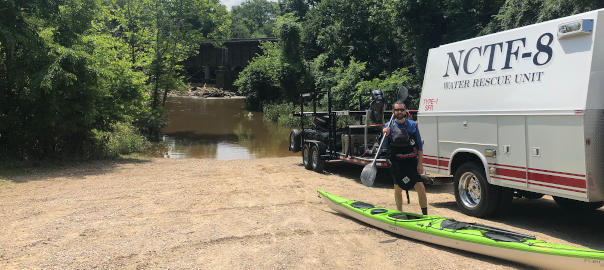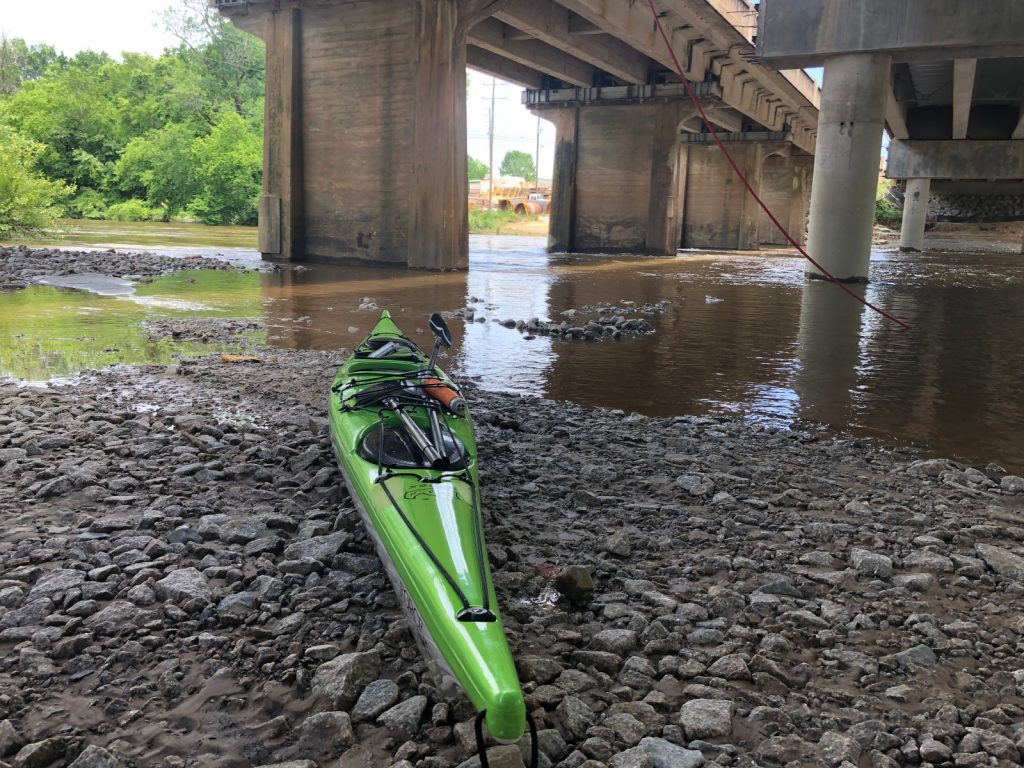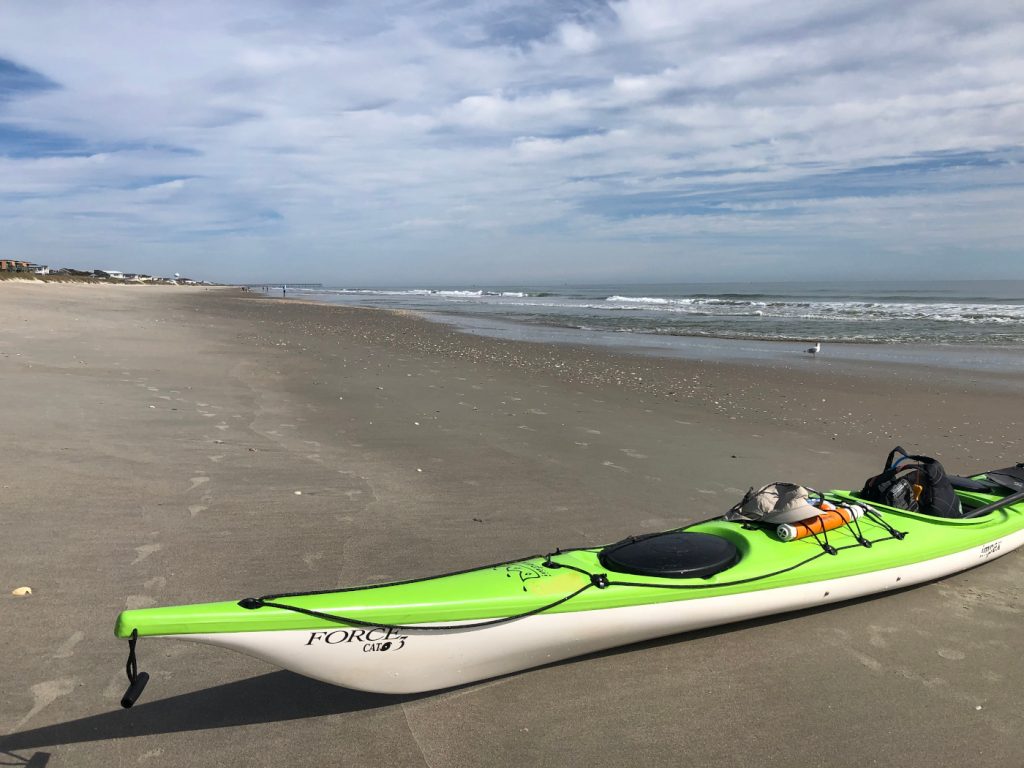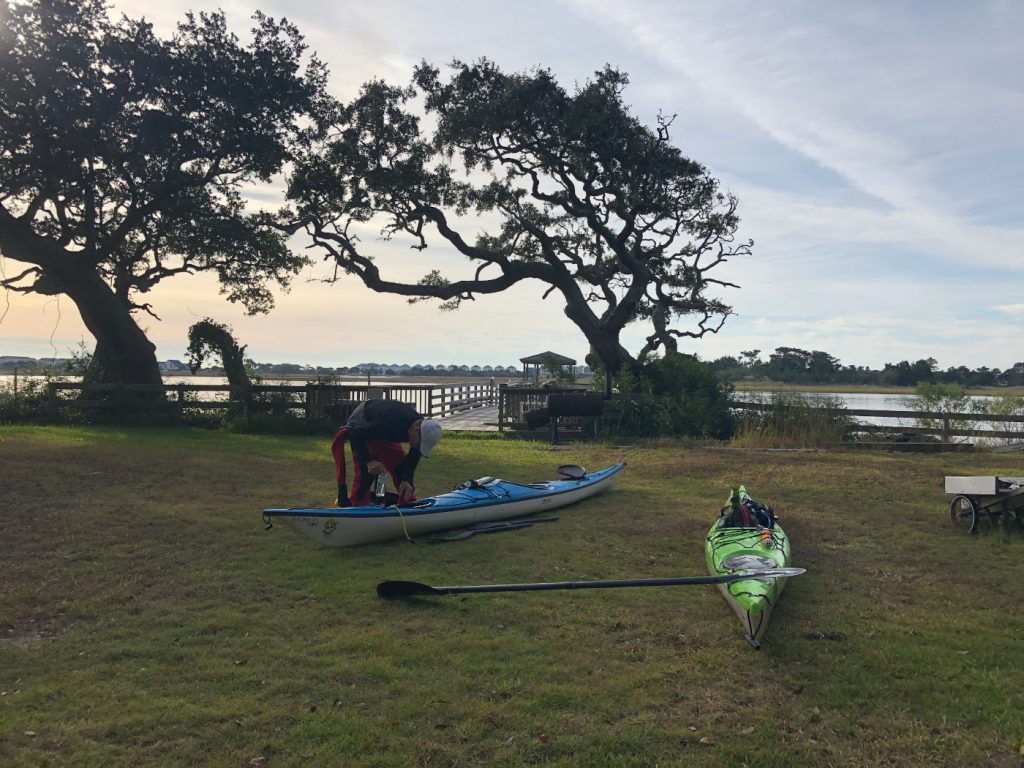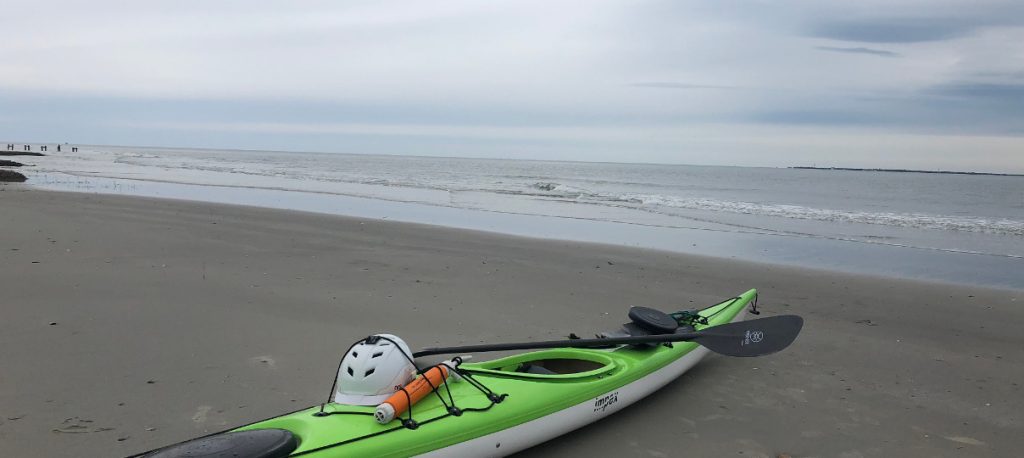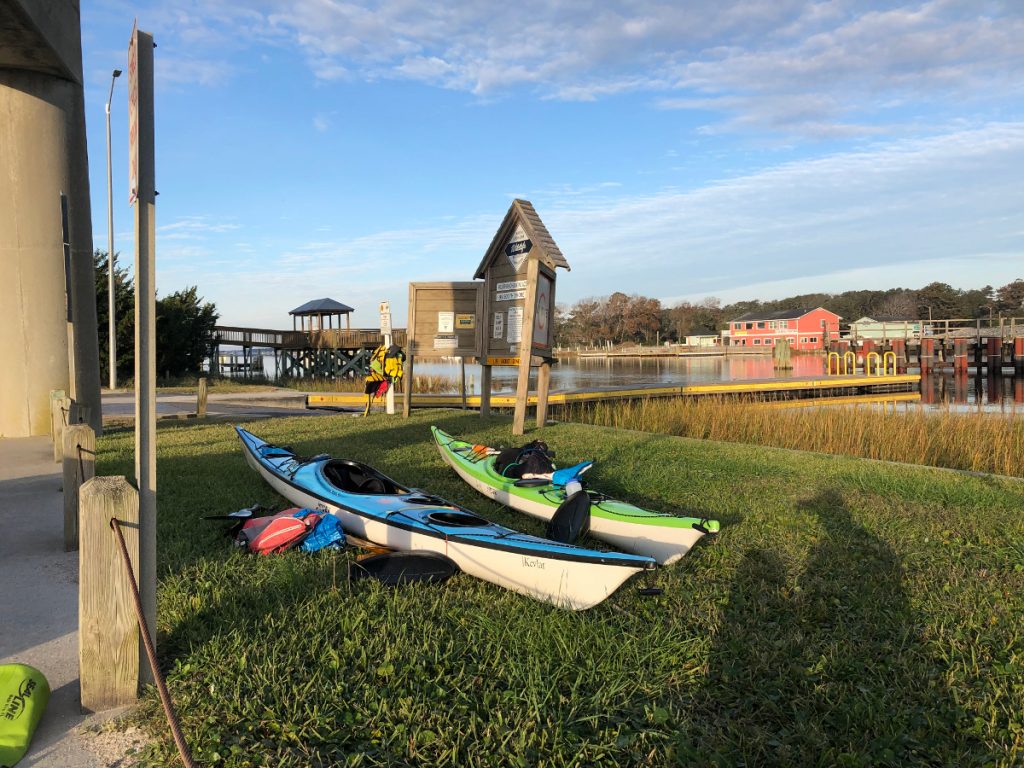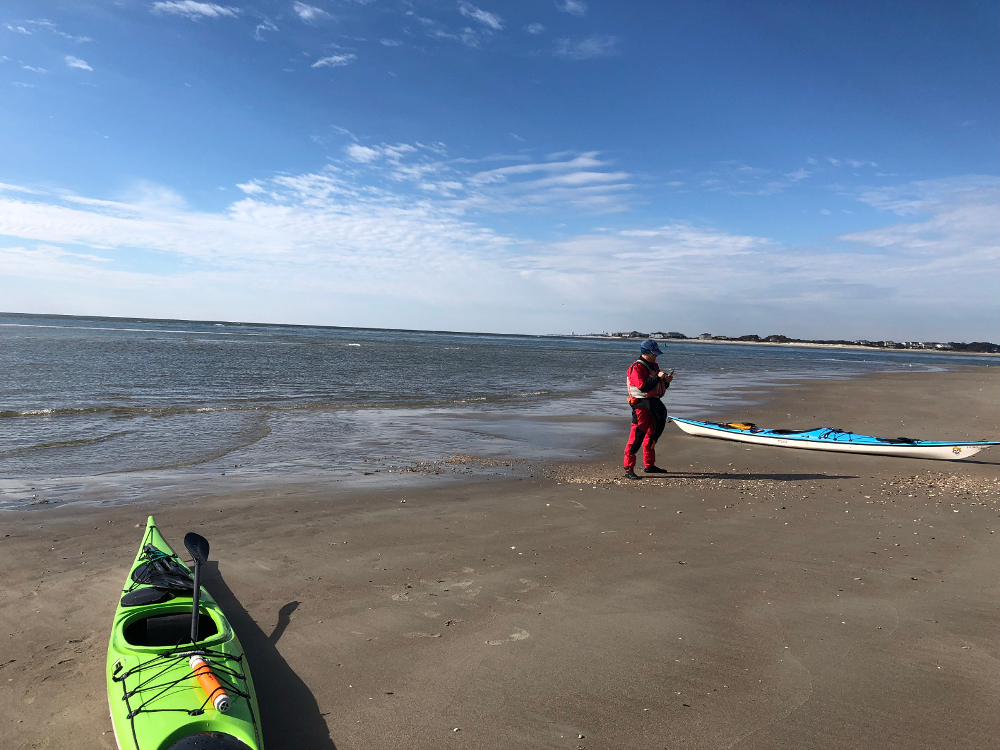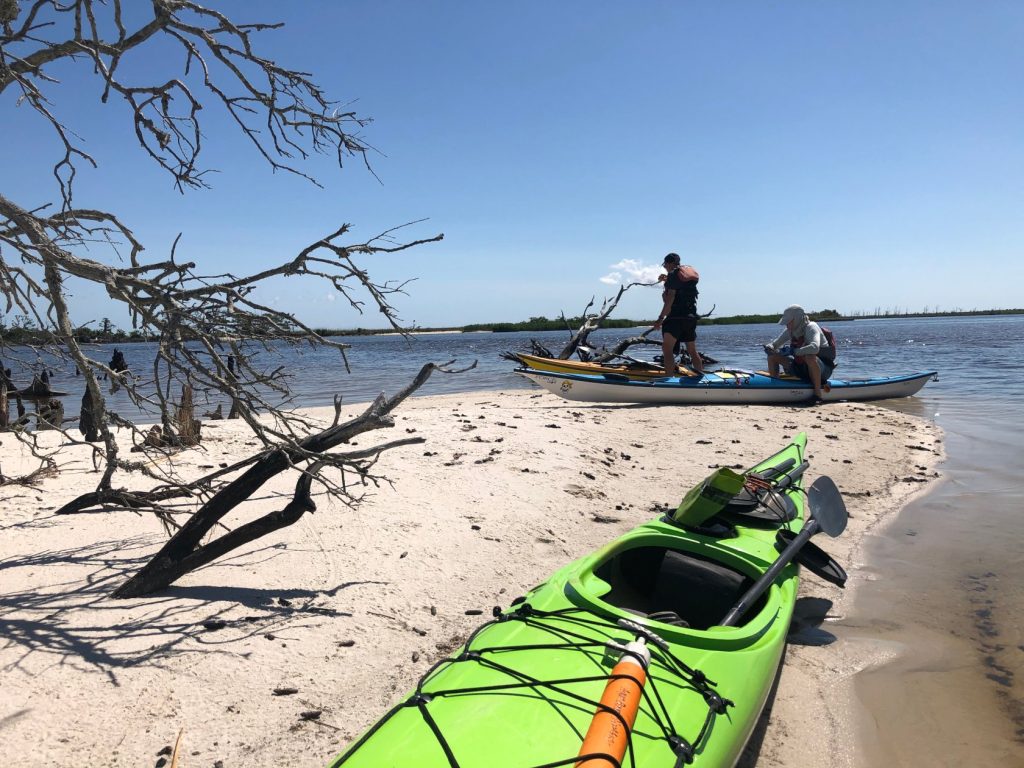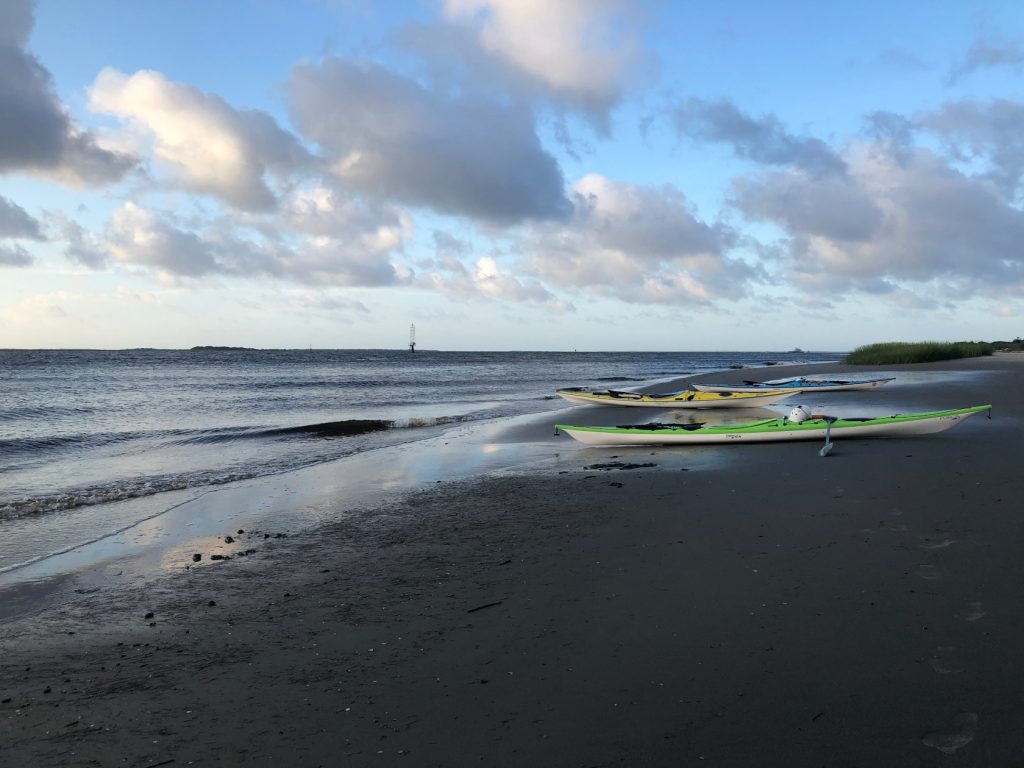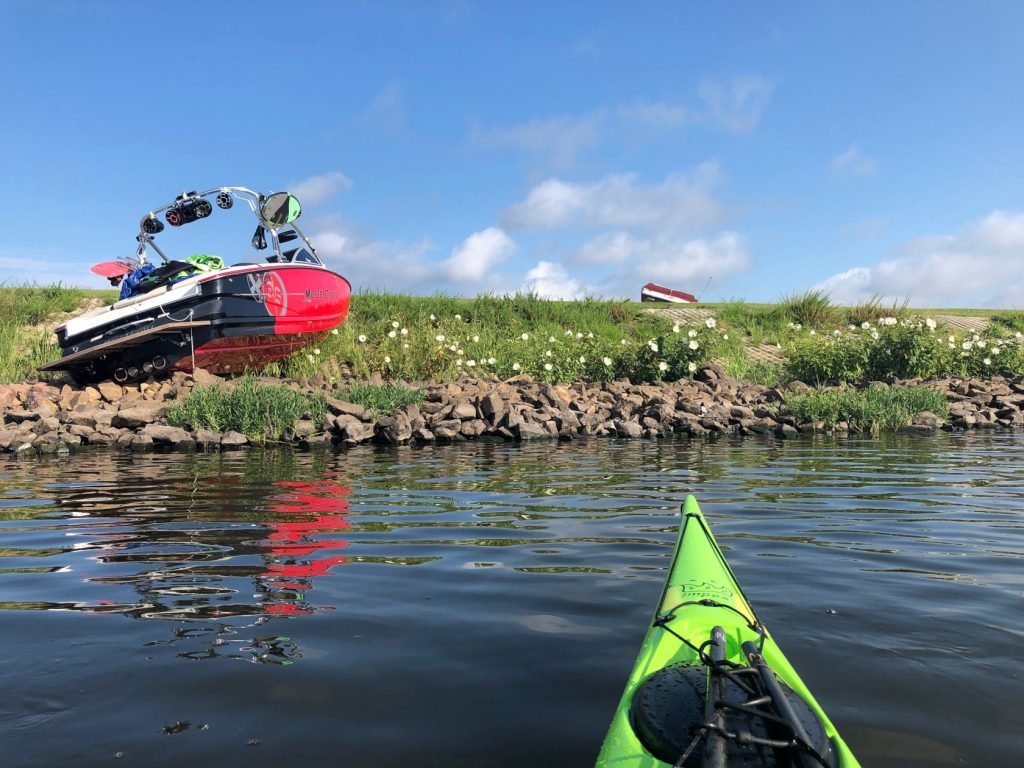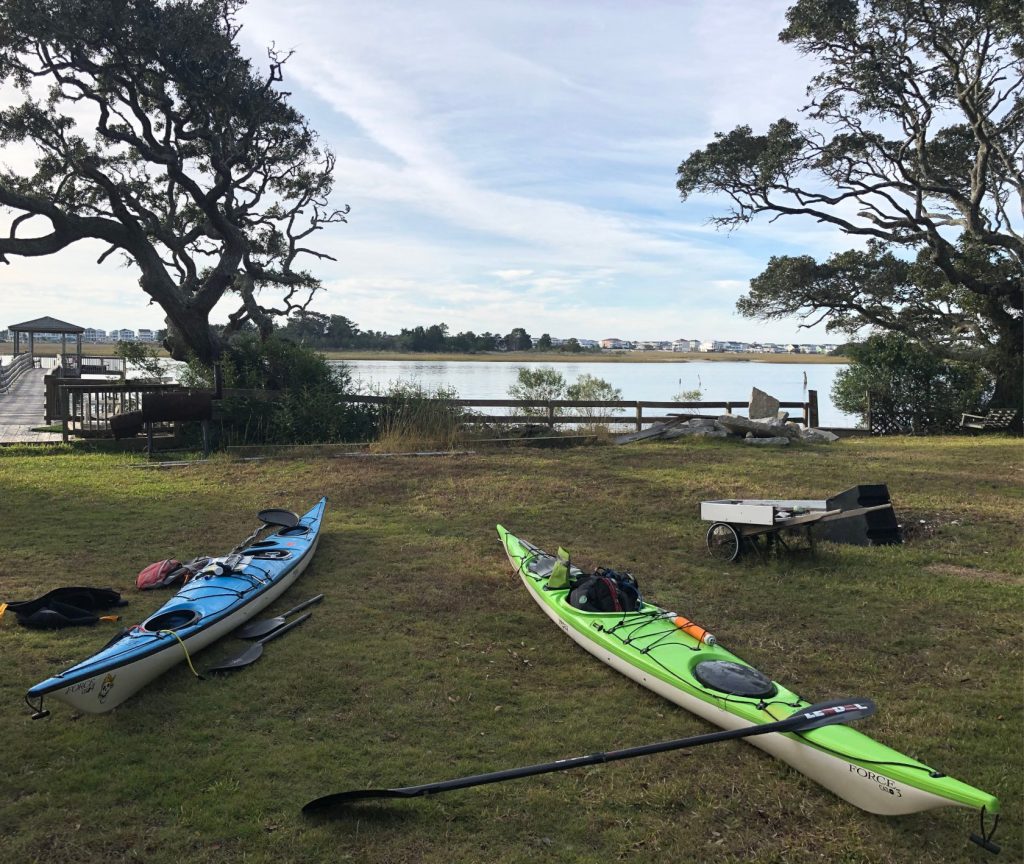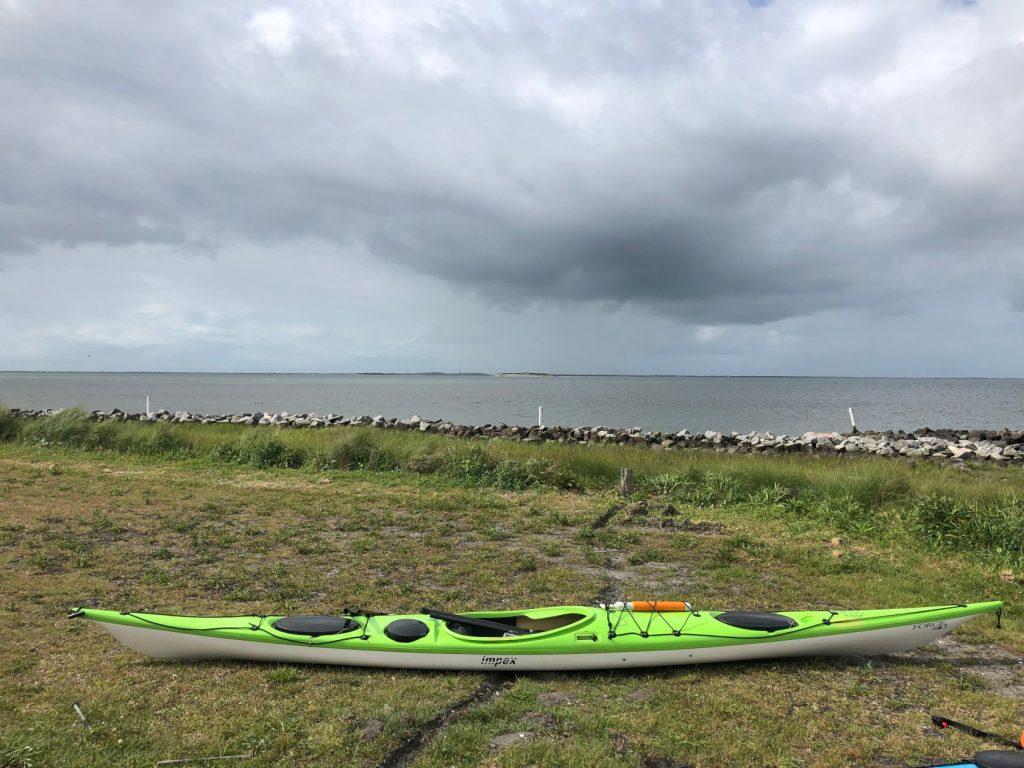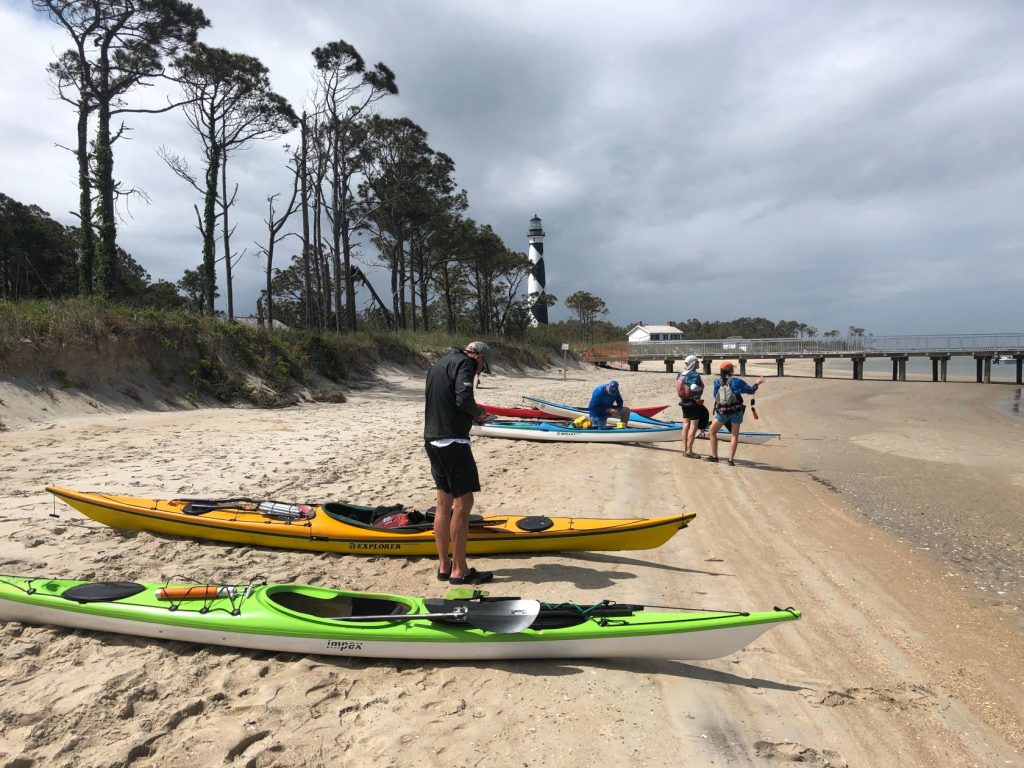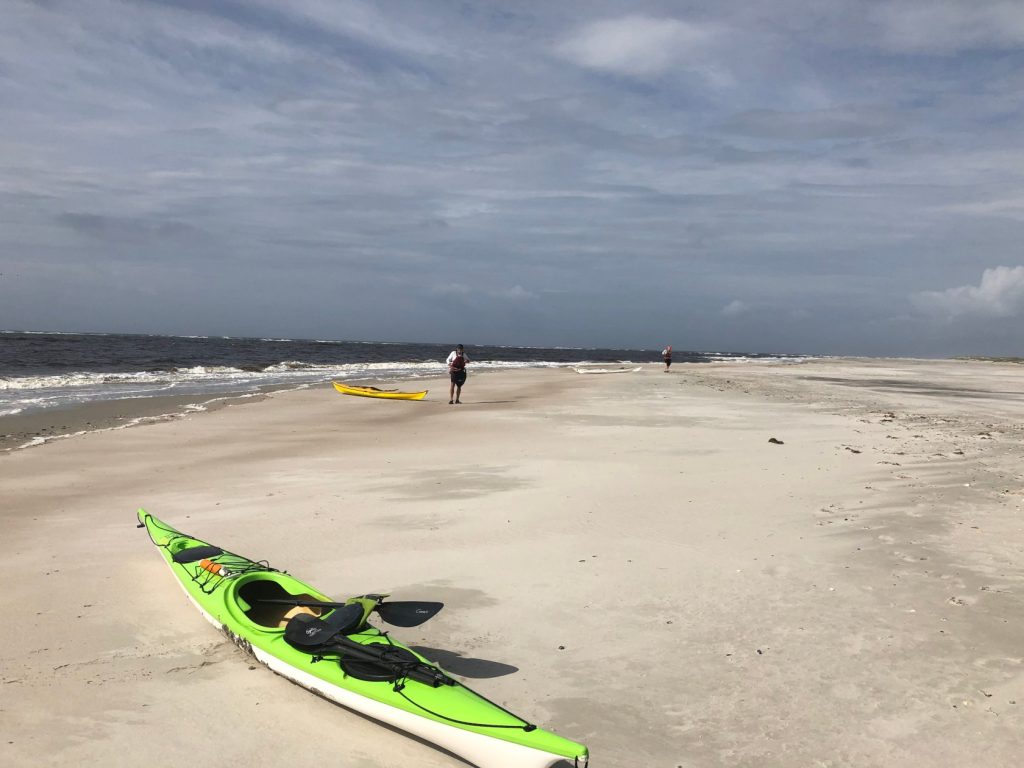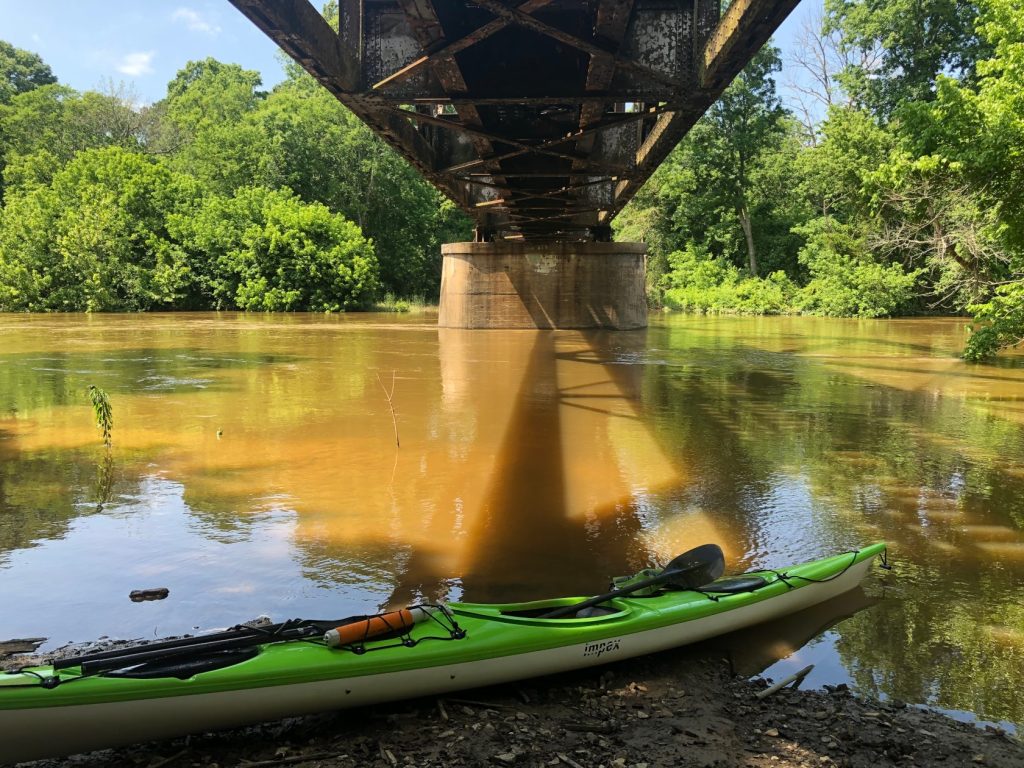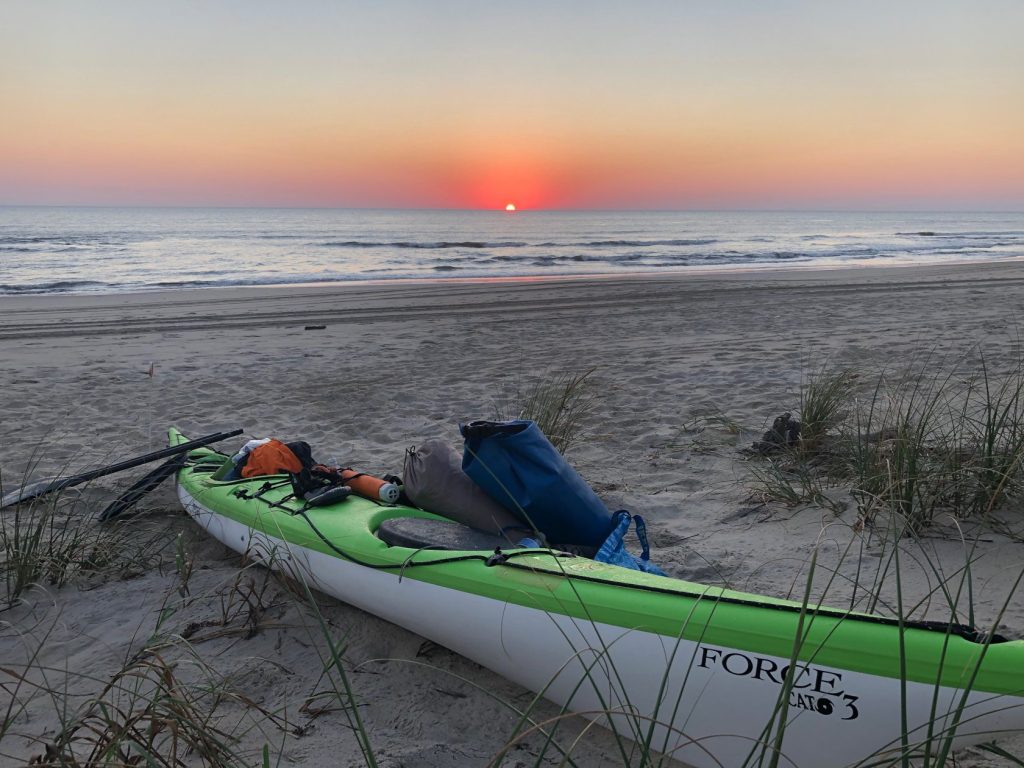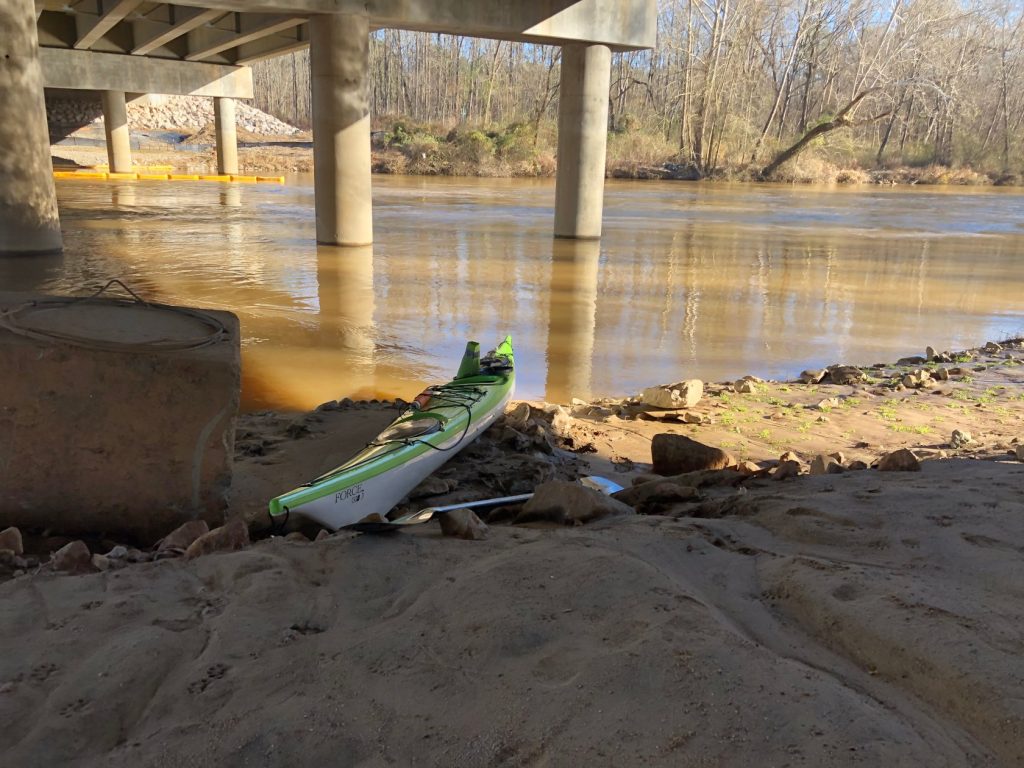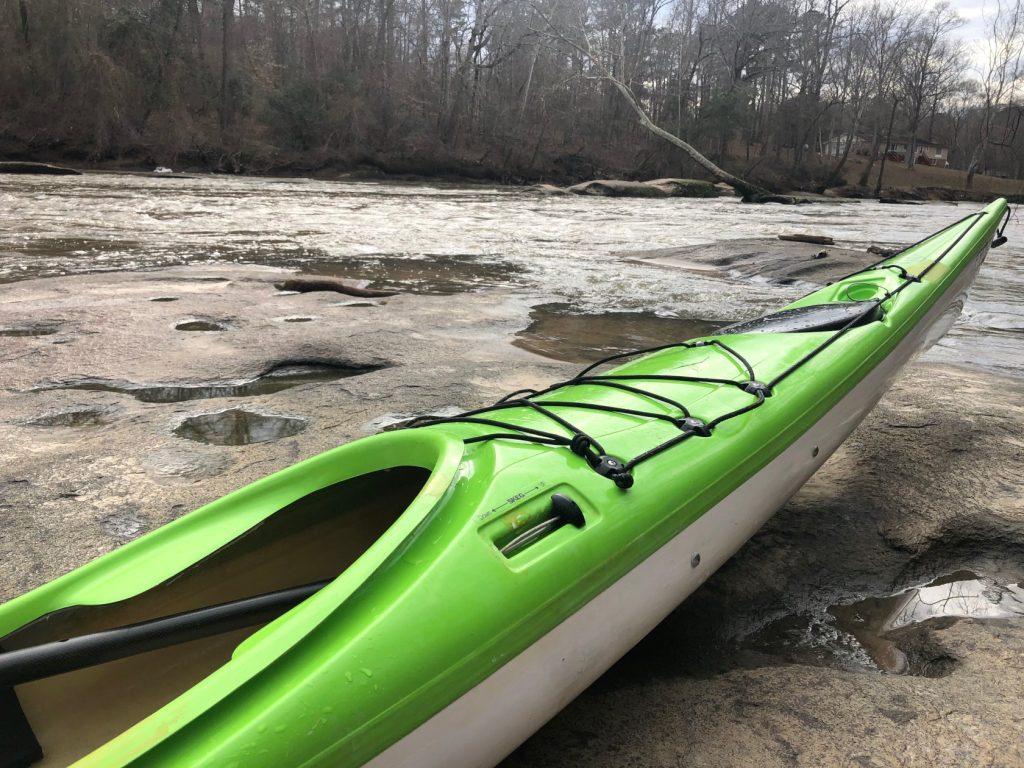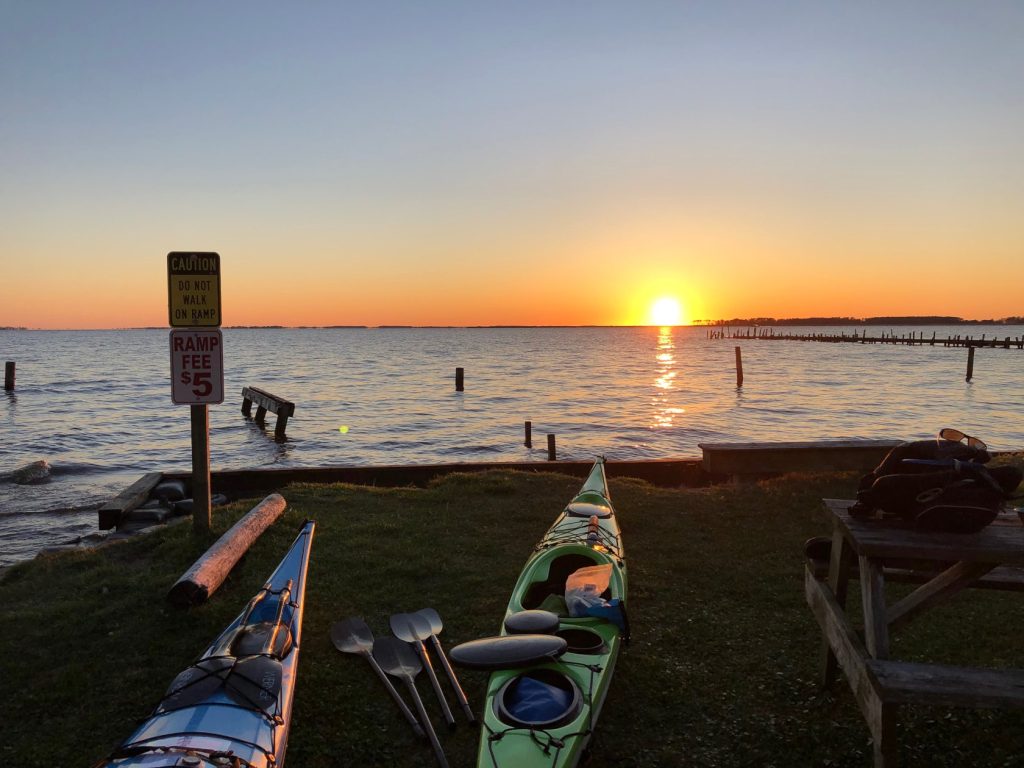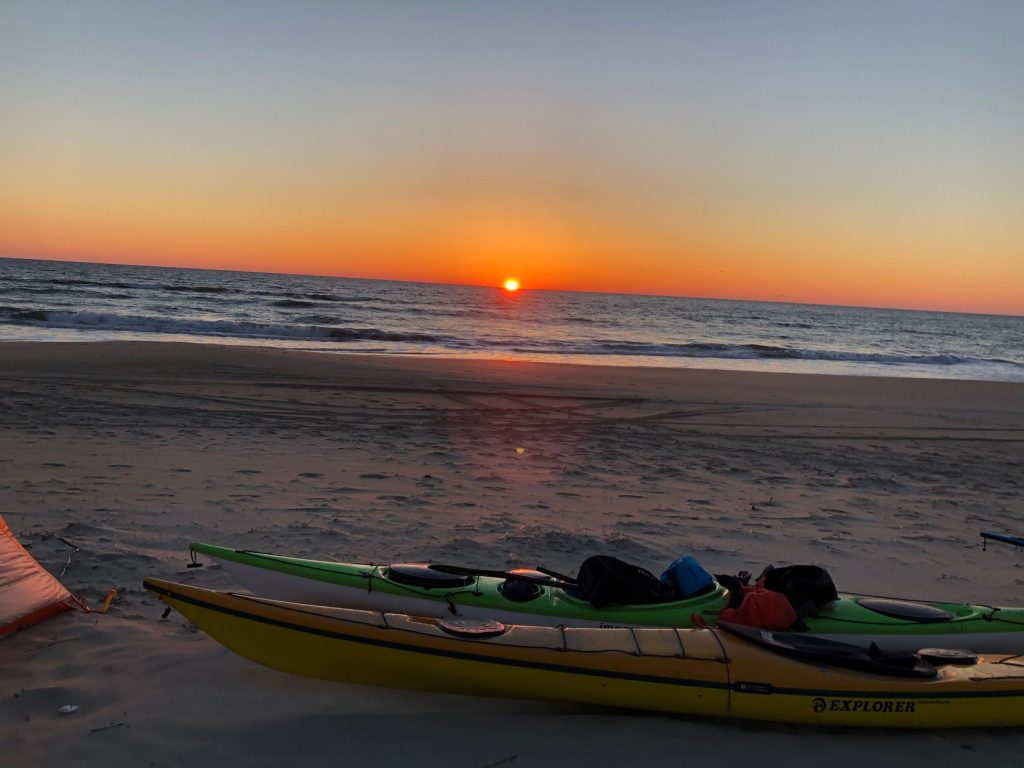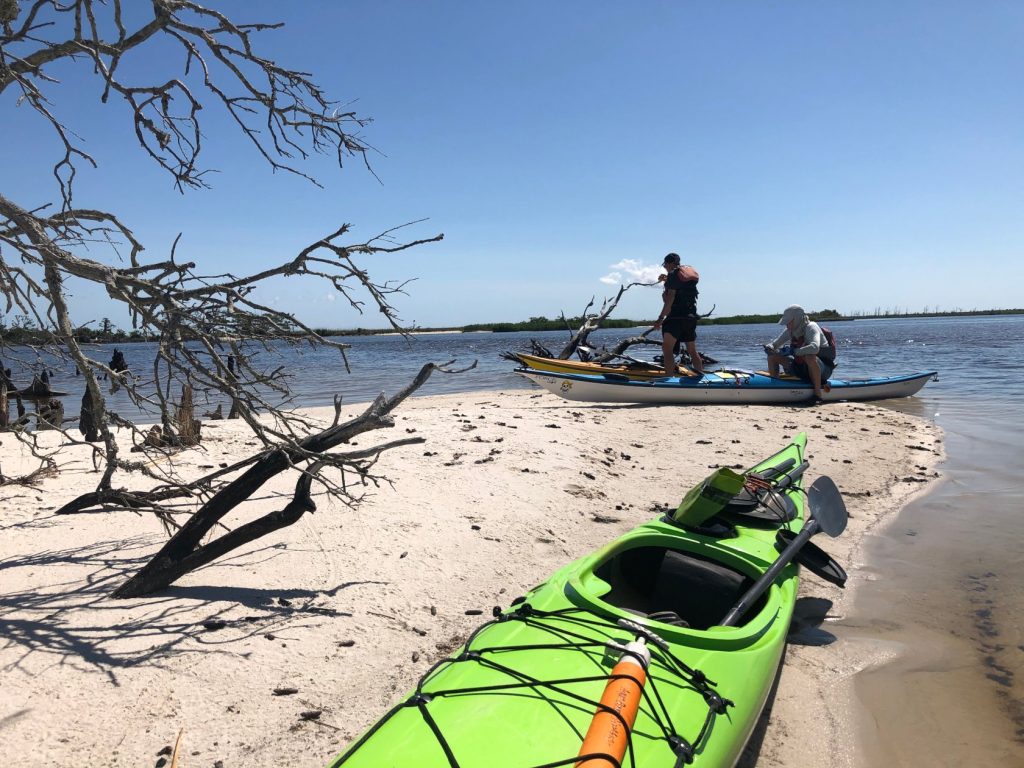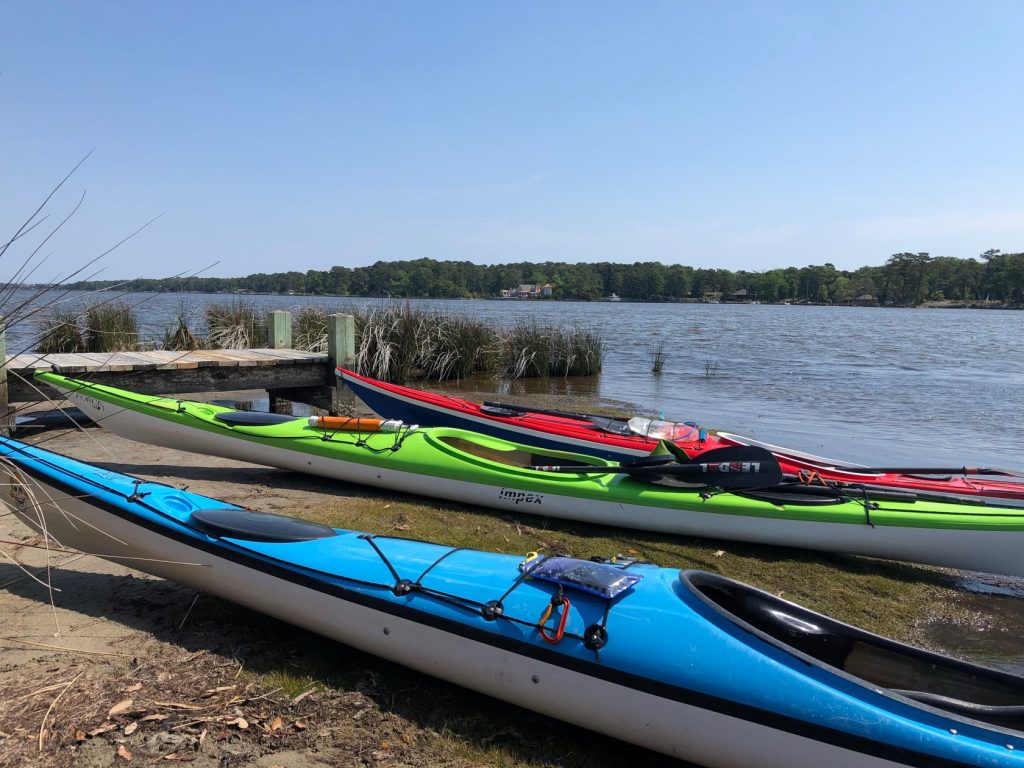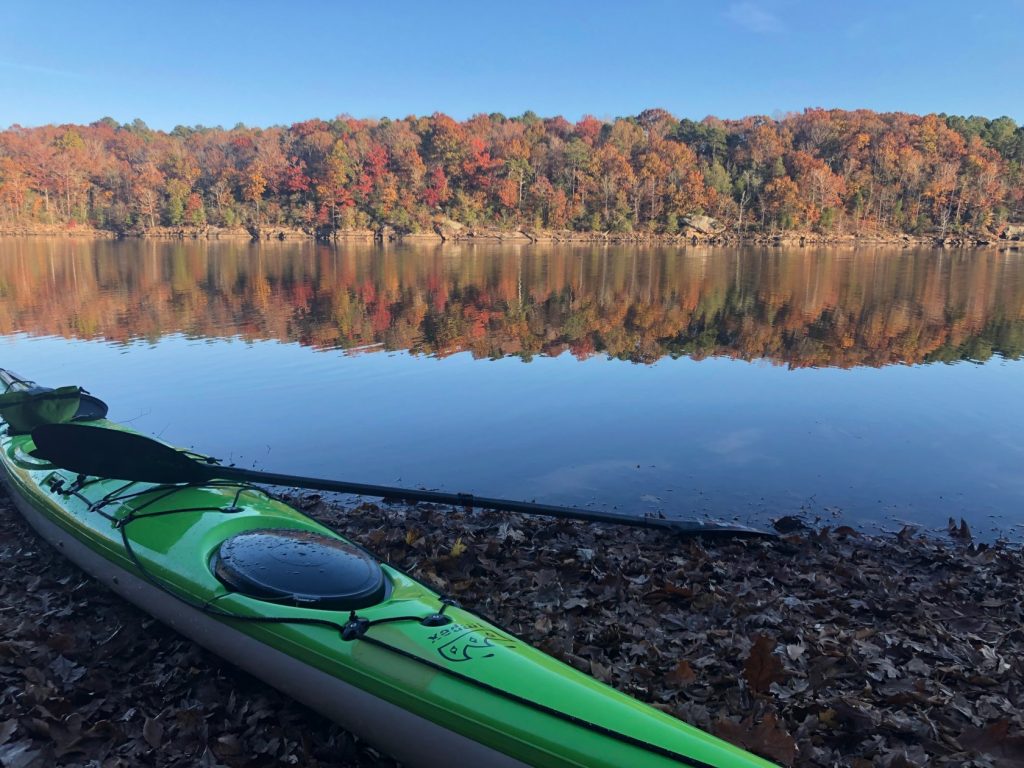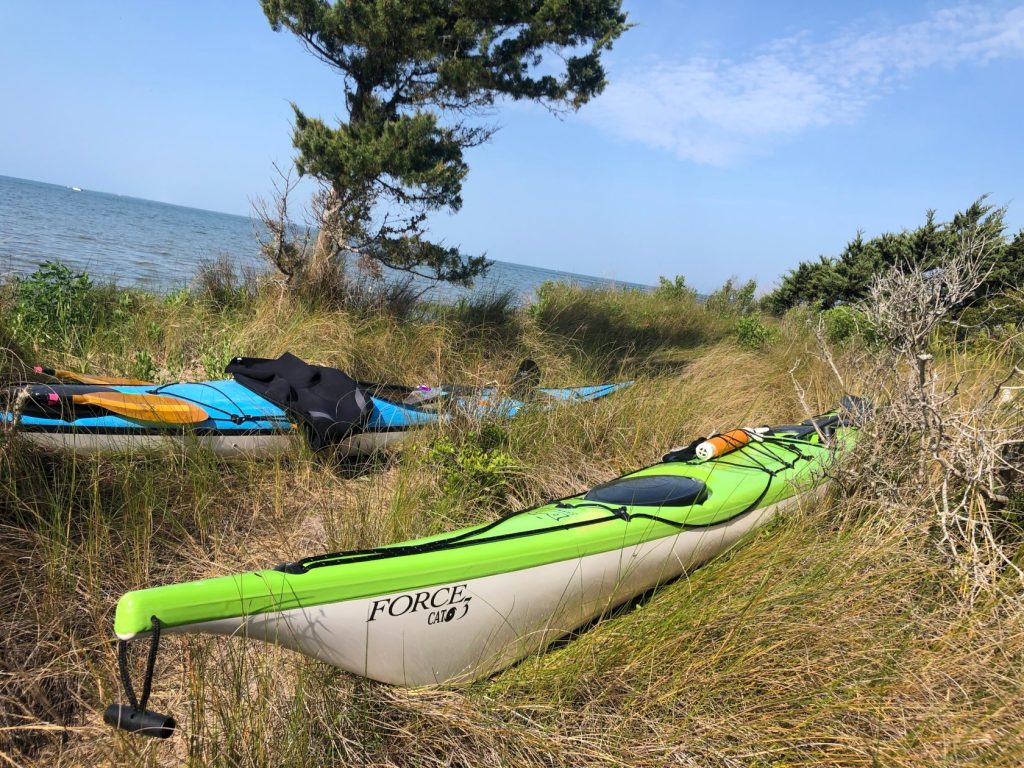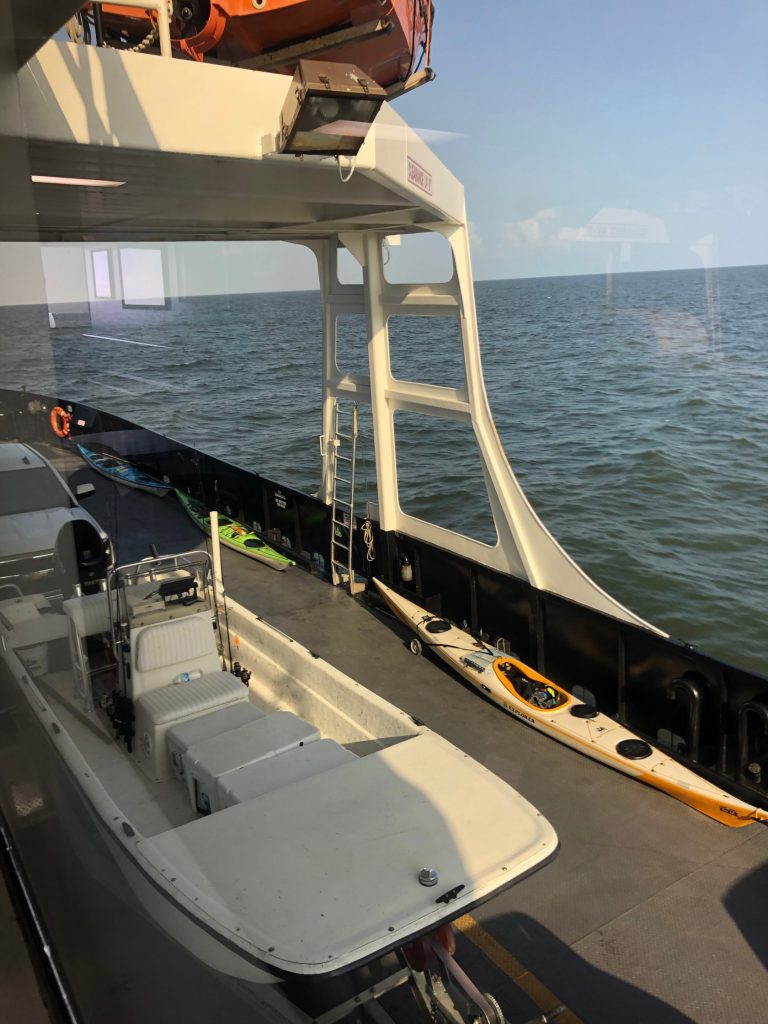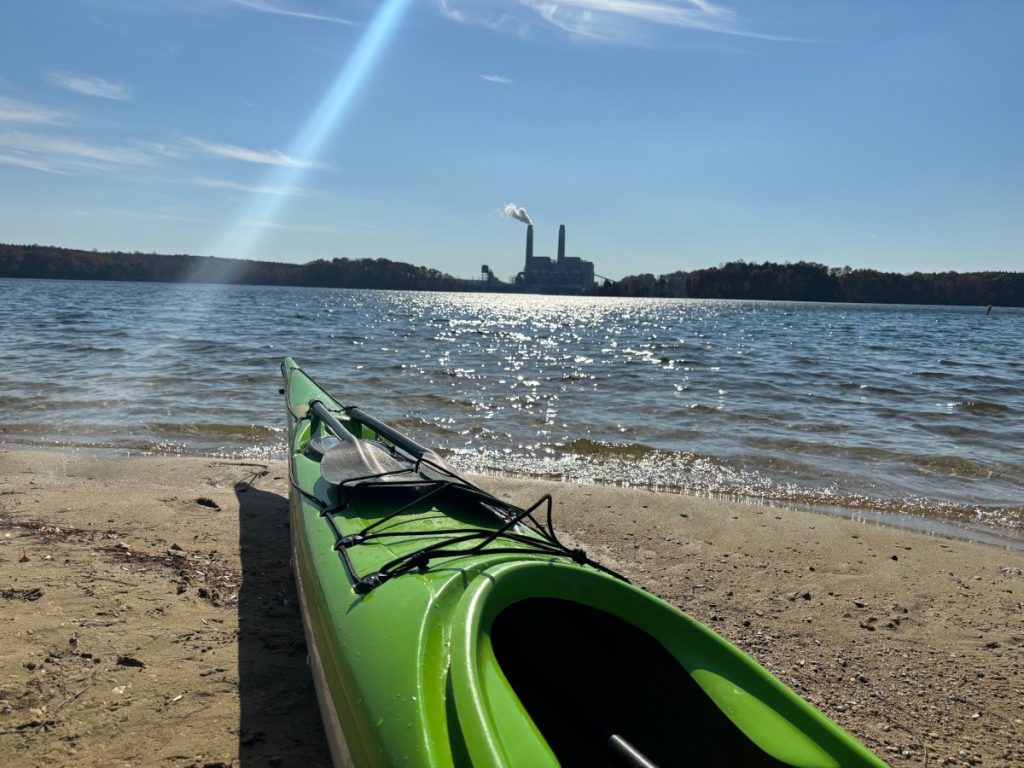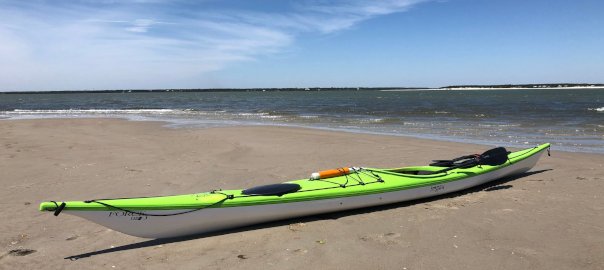I’ve owned my Impex Force Category 3 for around six years now and wanted to share a review of this great sea kayak.
My particular boat was manufactured in 2007 and I purchased it used in December of 2017. My main reason for purchasing it was that I wanted a longer touring boat to take on overnight paddles, as my NDK Pilgrim, which is also a great boat, has a ton of rocker and is made for maneuverability. This can leave something to be desired when you start paddling the Pilgrim over a long distance or outside of rough surf on flatter conditions.
The Force 3 is a lower volume boat when compared to the Impex Force Category 4, as well as about a foot shorter, and while I’m not a large paddler, I found it a little tight in terms of foot space. So, after a few trips, I removed the fiberglass seat and backband and replaced it with a foam seat and foam backrest. This allowed me to move the seat back approximately 3-4 inches, giving me a bit more foot room. Even still, I have the foot pegs all the way out.
The Impex quickly became my go to boat for overnight camping trips, as it has plenty of room for gear and almost no rocker, so you get to take advantage of almost all 17 feet of length this boat offers, making it great in terms of tracking and efficiency. When you start putting in miles, this becomes a very rewarding boat to paddle and even though it is somewhat narrow at 20.5 inches, it has great stability, even in rough water.
While my main goal for getting it was touring, I have taken it surfing and through some pretty rough water on various trips, with it handling great in all conditions. It loves rough water and handles it well.
It is also quite light and so it is easy to handle and load onto the vehicle.
In many ways, the Impex has become my preferred boat for almost all types of paddling and I’ve even taken to using it on the river when the water level is high enough that the risk of jamming it into a rock is fairly low and I can launch it without terrible risk of scratching.
Aging Gelcoat and Fiberglass Issues
It is an old boat and as such and while it came to me in great condition, I’ve put many miles on it and have had to do a few repairs.
When I had only had it for a short period of time, I cinched down the straps a bit too tight and cracked some gelcoat on the side. This led me to do my first gelcoat repair on the side using some of the paste that comes in gelcoat repair kits.
After a few years, I ended up with some more cracks on the bottom and this time, rather than use paste, purchased proper gelcoat and ended up redoing a great deal of gelcoat on the bottom.
I’ve also reinforced some of the fiberglass in the hatches and around the seat area.
It is in need of some more care now, as I’ve developed a few cracks in the fiberglass by the foot area, as well as a couple small cracks in gel coat in areas that I didn’t paint last time. This time, I plan to more thoroughly sand down the bottom and attempt spray gelcoat, whereas the last time I used a brush.
Ultimately, these sorts of issues are to be expected given the boat is over 15 years old and I’ve put it through a great deal of stress while I’ve had it, so I of course take full responsibility for all the gelcoat and fiberglass issues.
A Poorly Installed Skeg Handle Mechanism
The only complaint I really have about this boat is the manner in which the skeg handle mechanism was installed.
When I first went to look at the boat, I couldn’t get the skeg to go down. My initial thoughts were that it was just water logged and frozen, because the boat had been under someone’s deck, was filled with water, and the temperature had been below freezing for several days when I went to look at it.
After some use, however, I discovered that the issue was actually that the handle was catching due to the the bottom of the handle being broken.
The skeg mechanism used on this boat is fairly common for its generation. There is a skeg cable and behind it a metal rod that holds the handle in place. The skeg handle is attached to the cable and is supposed to slide up and down along the metal rod through a hole on the handle, which acts as a guide.
In this case, the plastic around the metal rod had broken and caused it to catch on metal rod, preventing it from sliding freely. If you played with it enough and got the angle right, it would go up or down, but that presents a safety concern if you are in a position where you actually need the skeg.
Normally, this isn’t a big issue, as the skeg handle mechanism is designed such that, typically from inside the cockpit, you can twist the metal guide bar, slide it up a bit, and then slide the handle on or off the guide bar.
However, as part of debugging this issue, I discovered that replacing the skeg handle on this boat was made more complicated than most, because when the boat was built, they fiber-glassed over the back of the skeg mechanism inside the cockpit. As a result, without cutting into the fiberglass, it wasn’t possible to get to the back of the mechanism and easily remove the handle.
Fortunately, I came across an old forum post by Marshall Seddon of the River Connection where he spoke about this issue, so I called him up and he provided me with some guidance for replacing it.
He advised simply cutting the handle out and then on the new handle, cutting a small notch in the back, allowing it to sit on top of the guide bar, as opposed to sliding on it. The end result is that the handle is attached directly to the skeg cable, but only sits on the guide bar. There is a slight risk that if caught on something, the cable could pull free, such as if you were to grab and pull it towards you. However, I think this is a relatively low risk and I’ve not had any issues since replacing it.
A Tight Fit
I would note that this is a low volume boat and I’m probably pushing the height/weight limits.
As mentioned above, I ended up replacing the fiberglass seat in the boat, which allowed me to move it back a few inches and gave me a bit more foot room. This has made the boat a lot more comfortable for me.
If you are a larger paddler, either in regards to height or weight, or just want a boat that has a bit more room, the Force 4 may be the better choice.
Final Thoughts
The Impex is my go to boat for the lake on paddle trips, and I also enjoy taking it on the river (when the conditions are right).
The long flat design, with little rocker, makes it tremendously efficient and despite being a relatively narrow boat, it has excellent stability, especially secondary stability as you get some forward momentum, and the Impex handles rough water with ease.
I greatly enjoy this boat and have put countless miles on it since I’ve owned it, as well as taking it on many great trips.
Boat Dimensions:
Length: 17′
Width: 20.5″
Depth: 10.5″
Weight: 55/50/45 lbs
Cockpit Dimensions: 15.25″ x 31″
Some of the Places We’ve Been Together
